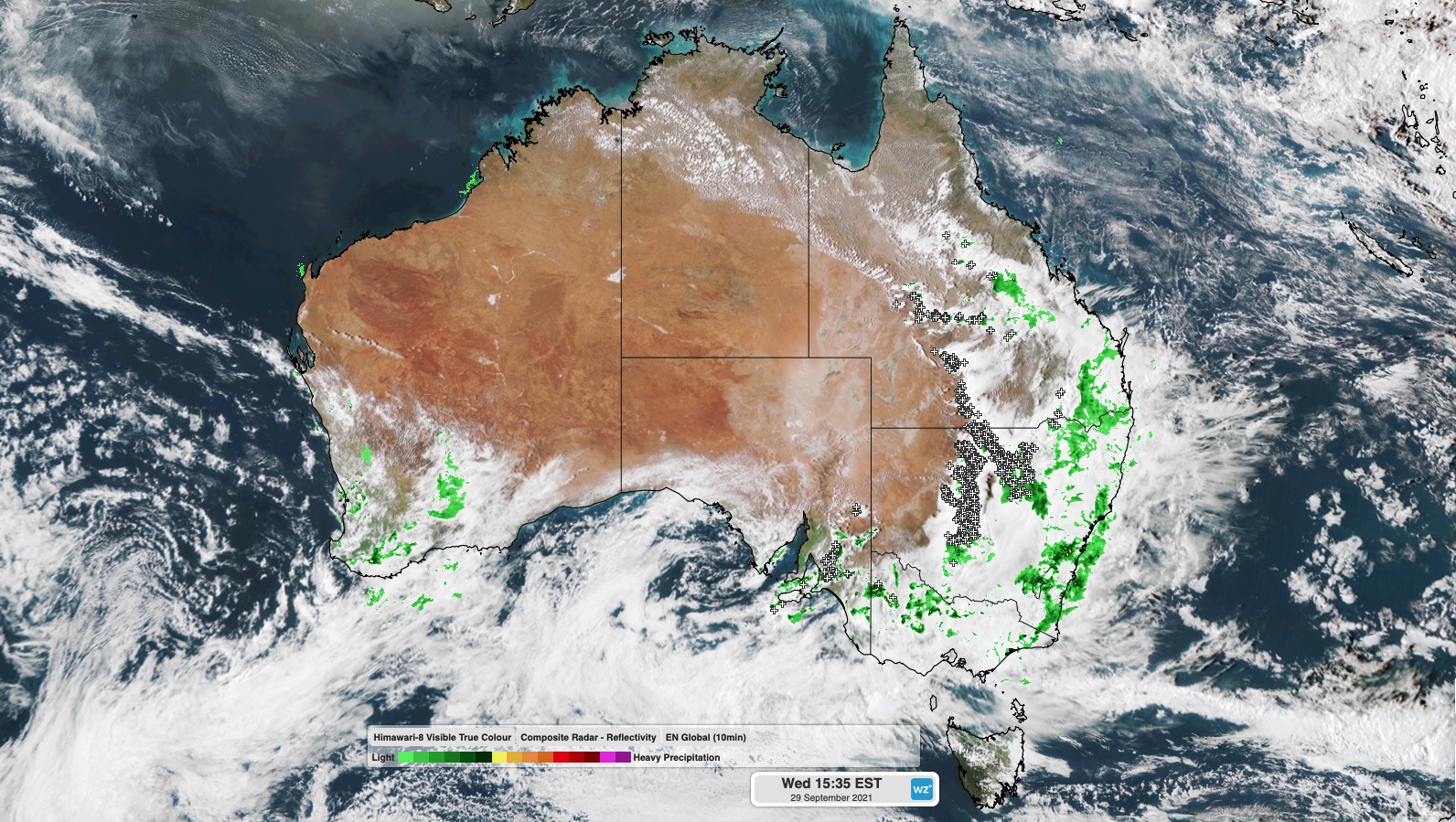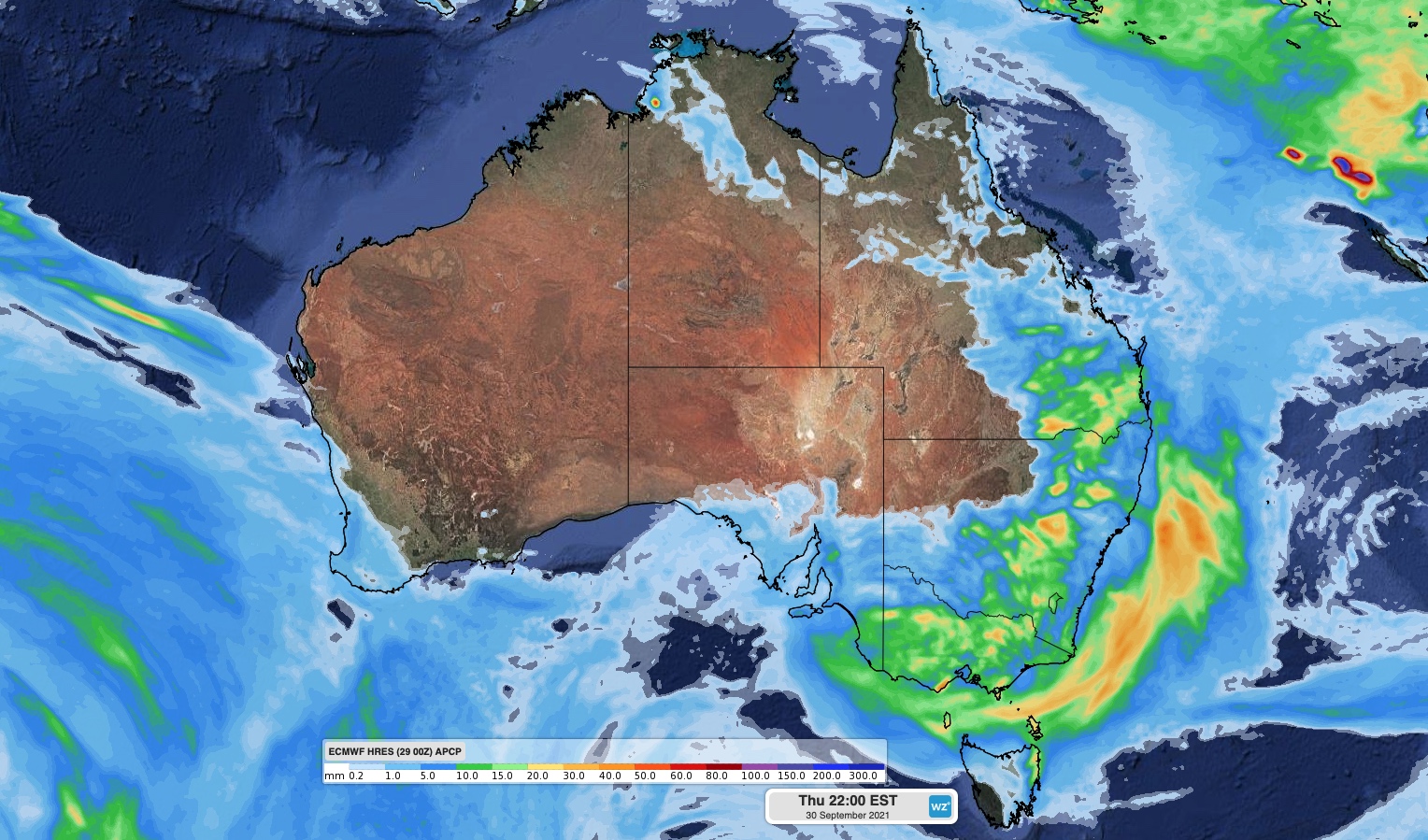More severe storms on Thursday
After two days of prolific lightning, eastern Australia will be hit by more severe thunderstorms on Thursday.
A broad upper-level low pressure system combined with a mass of moisture-laden air is producing several days of rain and severe storms in eastern and southeastern Australia this week.
On Wednesday, thunderstorms were stretching from central Queensland all the way down to South Australia in a broad arc stretching over 2,000 km.

Image: Composite satellite, radar and lightning observations showing widespread thunderstorms over eastern Australia on Wednesday afternoon.
Some of Wednesday's more intense thunderstorms included a series of slow-moving storms that dumped heavy rain and hail in the Adelaide Hills in SA, and a storm that dropped 40mm of rain in less than one hour at Bourke in western NSW.
Showers and thunderstorms will continue to affect a large area of Queensland, NSW, the ACT, Victoria and SA on Wednesday afternoon into the night, with lightning likely to light up the sky well after sunset.
The atmosphere should be unstable enough for some thunderstorms to rumble through the night and continue into Thursday morning. This will set Thursday up for a long day of rain and lightning, and more severe storms.
Showers and storms are likely to develop over parts of central, southern and southeast Queensland, much of eastern, central and southern NSW, the ACT and Victoria on Thursday. Some of this wet and stormy weather will also spread across Bass Strait and affect parts of northern and eastern Tasmania.

Image: Forecast accumulated rainfall on Thursday, showing the areas that are likely to be affected by rain or thunderstorms.
Severe thunderstorms are a good chance of developing in a wide corridor from central Queensland down to eastern Victoria on Thursday.
The most intense storms will most likely develop over Queensland's southeast inland and over central and northern inland NSW. In addition to regular severe thunderstorms, some places in this region could see supercells, which would be capable of producing destructive wind, giant hail and very heavy rain.
If you live in eastern Australia, be sure to check the latest warnings in your area as this outbreak of severe thunderstorms continues during the next few days.